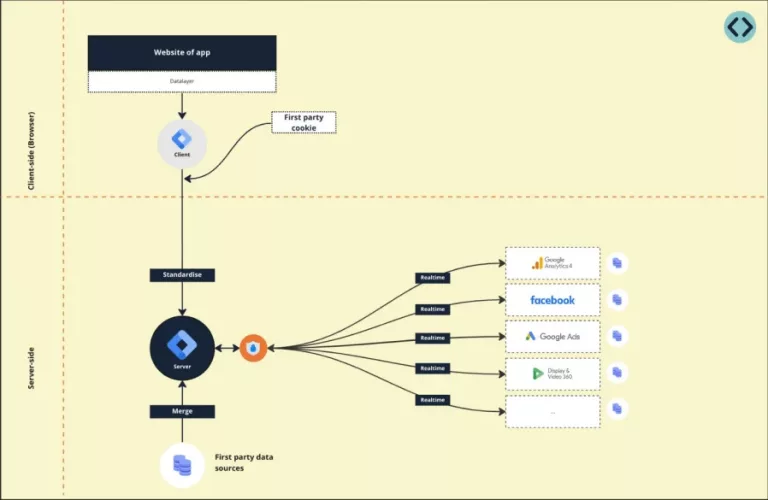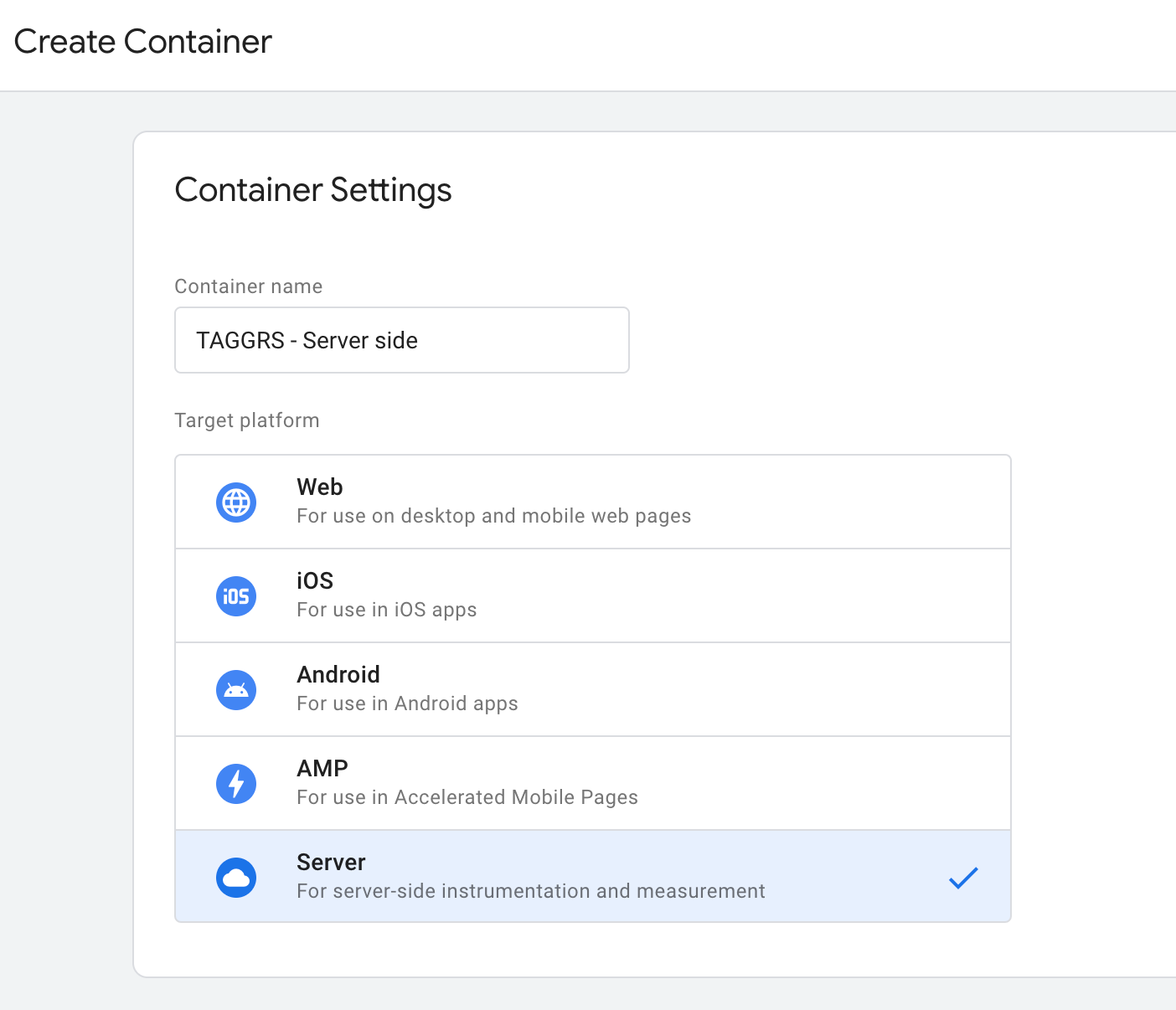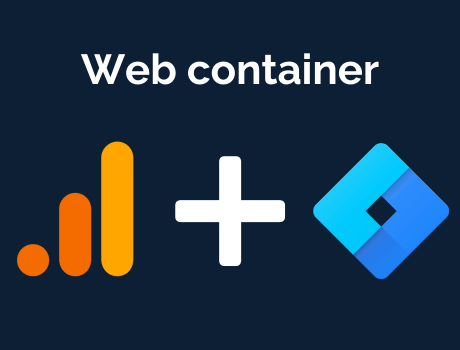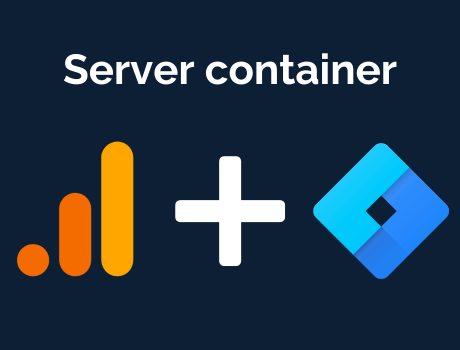GA4 (Google Analytics 4) Server Side Tracking is a new technique that allows you to more accurately track and analyze your visitors’ interactions without being affected by browser precedence (Safari) or privacy tools (Ad-blockers). Unlike traditional methods that place tracking codes and cookies directly in the visitor’s browser (Client Side Tracking), GA4 Server Side Tracking works by first sending data to your own server and then forwarding it to GA4.
This means that when a visitor takes a certain action on your website, such as viewing a page or performing a conversion, that information is first submitted to your own server before being sent to Google Analytics 4. This not only provides an extra layer of privacy for users, but also gives you more control and flexibility over what data you share with Google Analytics and any other platforms.

Third-party cookies are an important tool for marketers, but a source of privacy concerns for Internet users. More and more browsers, software and smartphones are putting the block on third-party cookies. By 2024, all major players will ban these cookies. Server Side Tracking provides the solution to keep your data recording 100% accurate.
Not to worry, there is an alternative: Server side tracking. This technology allows you to measure the effectiveness of your ads while respecting user privacy. Server Side Tracking lets you benefit from advanced and privacy-friendly tracking. It is designed to work efficiently without relying on third-party cookies. This way you can continue to track which ads are successful and which are not, and you can continue to optimize your campaigns.
Accurate event tracking is important for maximizing the potential of Google Analytics 4. However, with increasing privacy restrictions and blocking of third-party cookies, you may already be missing 10-30% of your crucial data. This poses a challenge, especially since advanced platforms such as GA4 rely heavily on data-driven insights.
Server Side tracking with GA4 is the key to enriching your data. The server container in this setup acts as an HTTP API endpoint, allowing you to integrate data from various sources, such as your CRM. This means you can send additional, valuable user information to GA4.
Result ⇾ Deeper insight, better analysis, and optimized strategies.
Server Side Tracking is a powerful tool that helps comply with General Data Protection Regulation (GDPR) legislation. This legislation requires organizations to respect their customers' privacy and protect their personal information. TAGGRS, a server side tracking solution, makes this process easier and more effective.
Server Side Tracking via TAGGRS gives you complete control over what data you share with what software. You can even filter out specific personal data from the tracking, which is a big advantage in terms of privacy protection. TAGGRS has servers around the world, allowing the data to be saved within EU borders, which is also GDPR compliant.
So with Server Side Tracking through TAGGRS, you can ensure that you are GDPR compliant while still collecting and using valuable data to improve your online marketing efforts. You can offer your customers the privacy they deserve while making effective use of the data you collect.
Little known fact: When you include parameters in the URL, for example UTM tags, the cookie's lifetime is limited to 1 day in Safari and Firefox!
Server Side Tracking extends the life of this cookie, ensuring that all conversions are attributed to the correct source.
In GA4 Server side tracking, data flows from the website into a Webcontainer, first structuring data in a data layer. In the webcontainer, GA4 events are created and forwarded to the server container. This is where the GA4 Client picks up the data, and then you use the configuration tag to send the events to Google Analytics: GA4. The accompanying blogs/videos explain each step in this process.
This is the first step, because you need a server container to manage your server-side tags. A server container allows you to place tags on your website without having to change your website's code. It allows you to Administer tags from one central location. We have written a blog of how to set up a good basic setup in 7 steps so you can get started with server side tracking.


Setting up GA4 correctly via Google Tag Manager in the Webcontainer is essential for accurately measuring and optimizing the user experience on your website. With Google Analytics 4, the latest version of Google Analytics, you have the ability to collect event-based data that provides valuable insights into the behavior of your website visitors.
Effectively setting up (E-commerce) events in Google Tag Manager is of great importance, both for web shops and business websites. It allows you to track and analyze important user interactions, such as purchases or demo requests. This provides you with essential insights to refine your online strategy and improve results.


A GA4 event tag in Google Tag Manager allows you to monitor specific actions on your website or app and pass this data to Google Analytics 4 (GA4). It provides insight into user behavior and their interactions.
A GA4 tag in the server container allows for more effective data transfer in a server-side environment. This is essential for proper transfer of data and (E-commerce) events to Google Analytics 4 via the server container, where it is processed by the GA4 Client.

Test your settings: Be sure to test your tracking settings to make sure everything is working correctly. This is a crucial step to ensure that you don't have problems with your tracking later.
Start GA4 Server Side Tracking and generate more sales and conversions in a world without third-party cookies.
TAGGRS
Copyright 2024, TAGGRS.
All rights reserved.